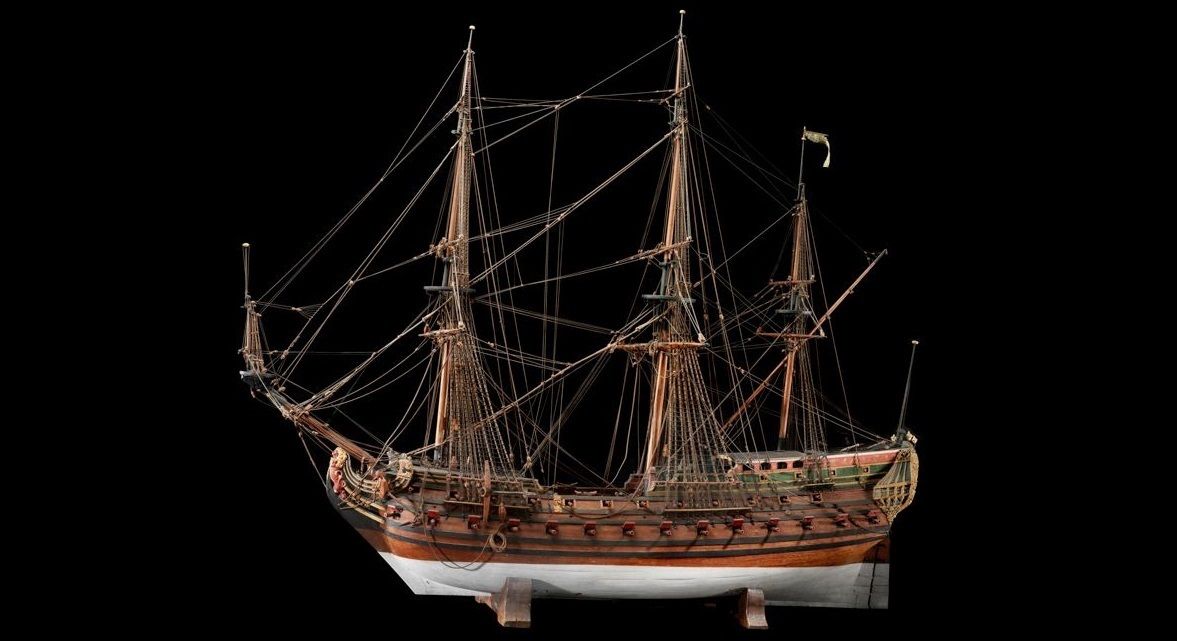
Rare model ship: the Padmos and the Blijdorp
Model ships have been made for centuries but there are not many authentic examples to admire anywhere in the Netherlands. This model from 1723 is exceptional because it represents two identical sister ships, the Padmos and the Blijdorp.
The East India Company’s main type of transport vessel
The identical VOC (Dutch East India Company) sister ships Padmos and Blijdorp were delivered shortly after each other in 1722 and 1723. They were so-called East Indiamen, sailing to the East Indies with the aim of returning with valuable cargo. This was the VOC’s main type of cargo vessel, which is why the ships often had richly decorated transoms. East Indiamen almost always sailed as a convoy of several ships at once to the East Indies because of the numerous risks along the way – of which pirates were the biggest hazard. Fully laden merchantmen were a rich prize and rival nations didn’t hesitate to attack each other’s trading fleets in times of war. As this model clearly shows, merchantmen were therefore equipped with a fair amount of firepower. Most East Indiamen made no more than four or five trips back and forth between the Netherlands and Asia. The voyages were long and intensive, resulting in a lot of wear and tear. Shipworm was particularly prevalent in East Asian waters, for instance, causing considerable damage to the timbers. To combat the effects of shipworm, the vessel’s hull was often double or (from the last quarter of the eighteenth century onwards) covered with copper plating.
Perfect detailing
When the Blijdorp ran aground on the west coast of Africa in 1733, it already had a lifespan of ten years behind it. That was about average, but the Padmos kept going for a strikingly long time, lasting for no less than 25 years. This model was built at about the same time as the two vessels themselves and represents both of them. That is why both names are given on the stern. The maker is not known. It might have been a former shipwright, or conversely an apprentice who had to learn how such a ship was put together. The near-perfect detailing suggests that it must have been someone associated with the shipyard, or at the very least someone who had extensive knowledge of this type of craft. Given its high quality and beauty, this model most likely stood as an ornament in a VOC boardroom.